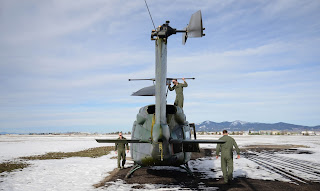The
Missile Defense Agency (MDA) intends to award a modification to the
existing Ground-Based Midcourse Defense (GMD) Development and
Sustainment Contract (DSC) to The Boeing Company in Huntsville, Ala.
“This
effort is for the acquisition of Re-designed Kill Vehicle (RKV)
development including: payload development; payload ground testing;
integration with the Ground-Based Interceptor (GBI) and GMD Ground
System; flight testing; several test assets; and up to eight initial
production units,” MDA said in contract documents released Friday.
The anticipated period of performance for this effort will be six
years, extending the current DSC period by three years, but only for
this additional RKV development effort.
Boeing
is the designer, developer, manufacturer, and integrator of the GMD
GBI. Boeing, along with its RKV Cross-Industry team of
sub-contractors, comprised of Lockheed Martin Space Systems Company,
and The Raytheon Company, provide a consolidated product that
includes the collective knowledge of all three contractors.
Currently, the GMD system is using a Exo-atmospheric Kill Vehicle (EKV) designed
to intercept and defend U.S. territory against long-range missile
attacks. The new RKV program was hatched following a string of EKV
intercept failures.
“The
Cross-Industry team will incorporate the most viable technical
approaches from each contractor, combining resources that will
complement each other's unique capabilities to shorten the learning
curve, and reduce the time needed to develop and begin initial
production,” MDA said in contract documents.

































